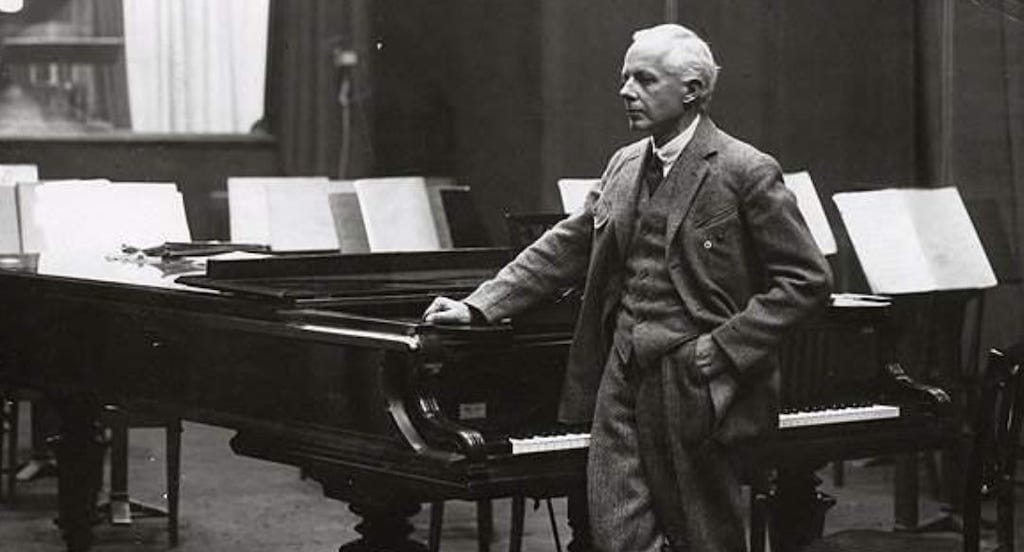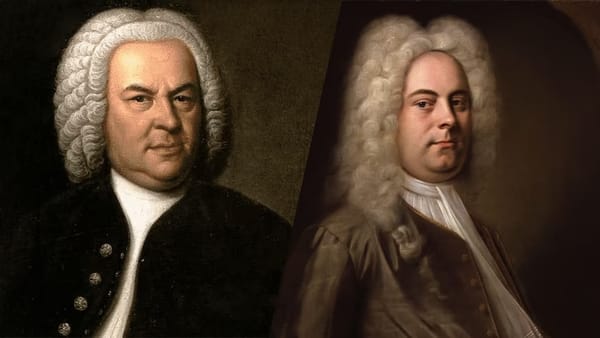Music in Exile: Composers Who Fled Tyranny
Exile shaped the lives and music of composers like Bartók, Rachmaninoff, and Schoenberg. Uprooted by war and repression, they created works that reflect longing, resilience, and the struggles of leaving their homelands behind.

Throughout history, exile has been a defining experience for many artists, forcing them to grapple with the loss of home and the struggle to create in unfamiliar lands. For composers, whose work is often deeply intertwined with cultural identity, exile poses unique challenges. How does one carry forward a musical tradition while adapting to a new reality? The stories of Béla Bartók, Sergei Rachmaninoff, and Arnold Schoenberg offer profound insights into the interplay between displacement and creativity. Each was compelled to leave their homeland due to war, revolution, or persecution, yet their music continued to thrive, often shaped by their longing and resilience.
Béla Bartók: A Hungarian Heartbeat in America
Béla Bartók, one of Hungary's most influential composers, was deeply connected to his homeland's folk traditions. From a young age, he immersed himself in the study of Hungarian and Eastern European peasant music, incorporating these melodies and rhythms into his compositions. His works, including the Six String Quartets and Music for Strings, Percussion, and Celesta, are celebrated for their innovative blending of folk elements with modernist techniques.
However, the rise of fascism in the 1930s cast a shadow over Bartók’s life. As Hungary allied with Nazi Germany, Bartók, an outspoken opponent of totalitarianism, became increasingly alienated. His refusal to allow his music to be performed at fascist events and his vocal condemnation of the regime made his position in Hungary untenable.
In 1940, Bartók made the painful decision to emigrate to the United States. While he carried his passion for Hungarian music with him, life in exile was far from easy. Financial struggles, declining health, and homesickness weighed heavily on him. The American music scene, with its focus on popular genres and Hollywood soundtracks, was starkly different from the environment Bartók had left behind.
Despite these challenges, Bartók composed some of his most enduring works in exile. The Concerto for Orchestra (1943), commissioned by Serge Koussevitzky, stands as a triumph of creativity amidst adversity. The piece, imbued with vitality and lyricism, showcases Bartók's mastery of orchestral color and structure. Its blend of Hungarian folk motifs with universal themes speaks to his ability to transcend borders while staying true to his roots.
Bartók’s music in exile reflects a duality: the pain of displacement and the enduring power of cultural identity. Though he passed away in New York in 1945, far from his beloved Hungary, his works continue to resonate as a testament to the resilience of the human spirit.
Sergei Rachmaninoff: A Nostalgic Elegy for Russia
For Sergei Rachmaninoff, the October Revolution of 1917 marked the end of life as he knew it. The upheaval forced Rachmaninoff and his family to flee Russia, leaving behind their estate, friends, and the cultural environment that had nurtured his talent.
Settling in the United States, Rachmaninoff quickly established himself as one of the world’s leading pianists and conductors. However, his new role as a performer came at a cost: the demands of constant touring left little time for composition. The few works he created in exile are tinged with longing for his homeland, reflecting his deep sense of loss.
The Rhapsody on a Theme of Paganini (1934) is a prime example of this duality. While its virtuosic variations on Paganini's theme display Rachmaninoff's technical brilliance, the lyrical 18th variation conveys a profound emotional depth, often interpreted as a love letter to the Russia he could never return to.
Rachmaninoff’s Third Symphony (1936) further explores themes of nostalgia and displacement. Though initially met with mixed reviews, the symphony has since been recognized for its rich textures and introspective character. Its melodies evoke the Orthodox liturgical chants and folk tunes of Rachmaninoff's youth, serving as a poignant reminder of his cultural heritage.
His final work, the Symphonic Dances (1940), encapsulates his exilic journey. Featuring fragments of the Dies Irae and echoes of earlier compositions, the piece reflects both a confrontation with mortality and a celebration of artistic legacy. Rachmaninoff’s music in exile serves as a bridge between his past and present, offering listeners a window into the soul of a composer grappling with the complexities of displacement.
Arnold Schoenberg: Rebuilding in the New World
While Bartók and Rachmaninoff sought solace in their cultural pasts, Arnold Schoenberg used exile as an opportunity for reinvention. A pioneer of atonality and the twelve-tone technique, Schoenberg was a central figure in early 20th-century European music. However, as a Jewish composer, he became a target of Nazi persecution. In 1933, Schoenberg fled Germany, eventually settling in Los Angeles.
The transition from Vienna to California marked a dramatic shift in Schoenberg’s life and career. Though he initially struggled to find his footing in Hollywood, he soon established himself as a teacher, influencing a new generation of American composers.
Schoenberg’s music during his American years reflects his evolving response to exile. Works like the Violin Concerto (1936) and Piano Concerto (1942) showcase his intellectual rigor, blending complex twelve-tone techniques with emotional expressiveness.
One of his most poignant works from this period is A Survivor from Warsaw (1947), a dramatic cantata that memorializes the victims of the Holocaust. Combining spoken text, orchestra, and male chorus, the piece captures the horrors of Nazi atrocities while affirming the resilience of the human spirit. Schoenberg’s use of Hebrew text in the final chorus underscores his reconnection with his Jewish identity, a theme that became increasingly important in his later years.
Despite his successes, Schoenberg often lamented the loss of European culture and the intellectual circles he had left behind. His writings reveal a deep ambivalence about his new life in America, where he felt both welcomed and alienated. Yet, his ability to adapt and innovate ensured his legacy as one of the most influential composers of the 20th century.
Music as a Refuge
The experiences of Bartók, Rachmaninoff, and Schoenberg highlight the transformative power of exile. For each, displacement was a profound source of sorrow, yet it also became a catalyst for artistic growth. Their works, shaped by longing and resilience, transcend the specific circumstances of their creation, speaking to universal themes of loss, adaptation, and the search for belonging.
Their stories remind us of music’s unique ability to bridge divides, offering solace and connection in times of upheaval. In a world where displacement remains a pressing reality for many, the music of these exiled composers serves as both a testament to human endurance and a call for empathy.





